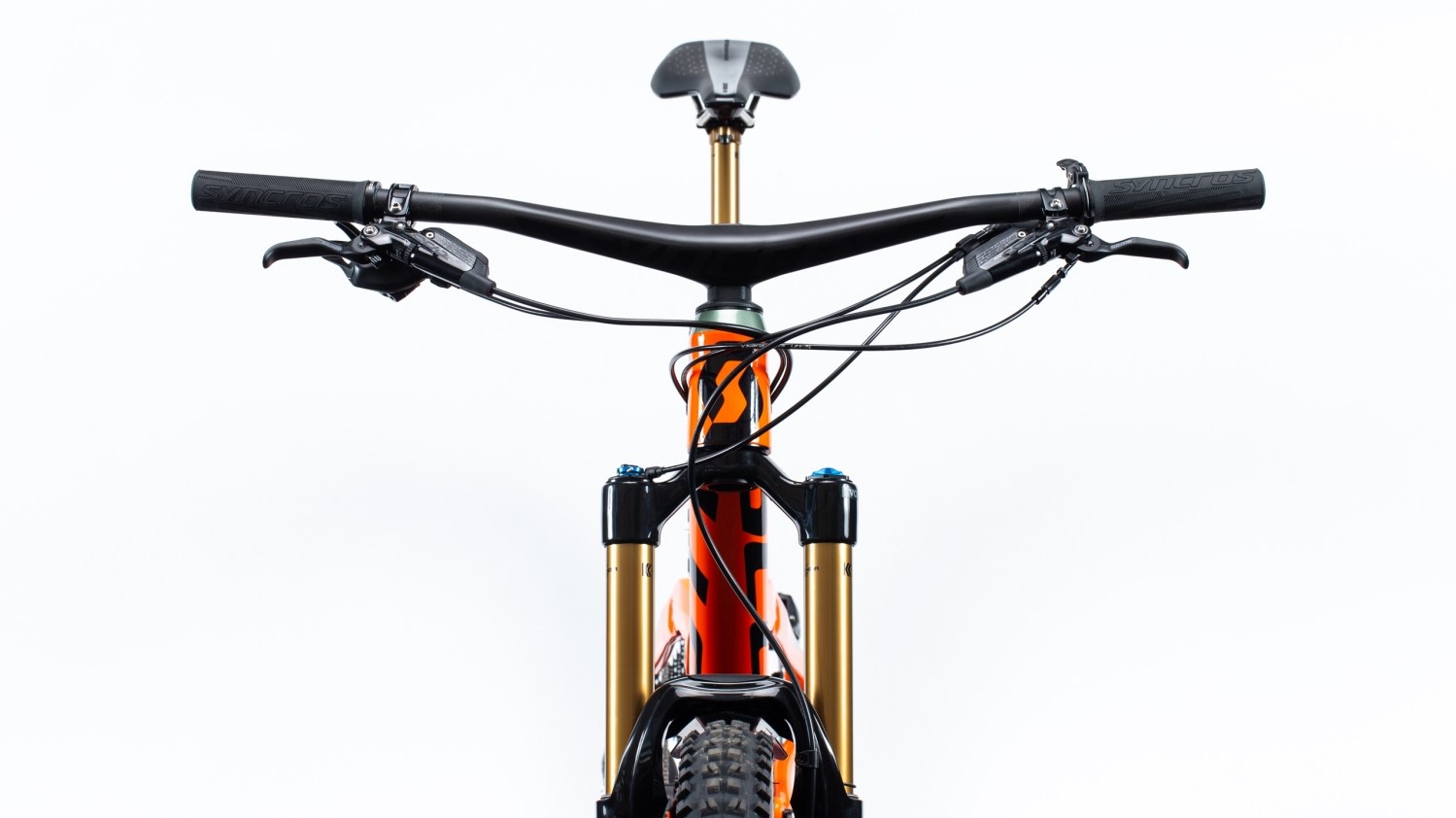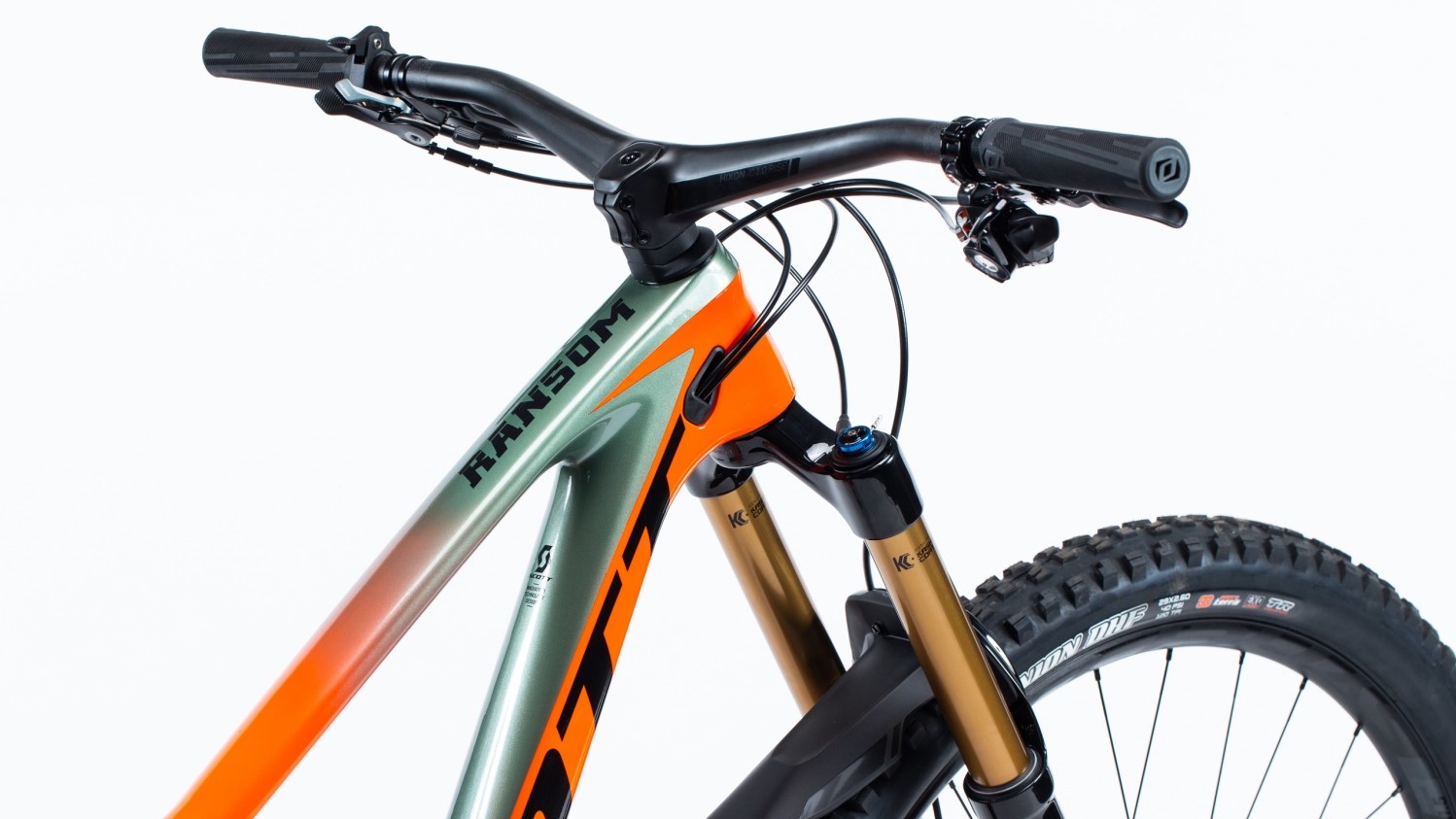The integrated cockpit conundrum
Integrated cockpits look slick and futuristic, but are they better?

Road bikers have been using integrated stems and handlebars in the pursuit of aerodynamic gains and reduced weight, but does the concept pass muster for mountain biking?
The benefits of a single piece handlebar and stem combination appears obvious: it should be much lighter and can optimise the vibration damping available with meticulously engineered carbon fibre. Yet the available supply of integrated mountain bike handlebars and stems remain extremely limited. Why?
Cost is certainly a factor. A one-piece carbon cockpit retails for about tree times what you’d pay for a premium aluminium stem and handlebar, which are bolted together. But if the comparison is pure carbon, the cost equation alters.
An integrated composite cockpit is cheaper than buying a separate carbon-fibre stem and handlebar, then marrying them together. Carbon-fibre stems remain rarer than carbon handlebars and that makes them particularly pricey.
If you do an actual cost comparison, the value is certainly with an integrated handlebar and stem – if you desire a composite cockpit, instead of purchasing two separate components.
Although road riders might appreciate the slick monocoque chassis of an integrated carbon stem-and-bar, mountain bikers have become accustomed to the presence of a wraparound stem, with a faceplate and bolts.
Beyond the issue of familiarity, there are real questions of whether an integrated carbon cockpit is in fact that much lighter than a separate stem and handlebar? Scott’s Syncros Hixon range integrates stems and handlebars. A Hixon with nice trail riding width (780mm) weighs 270g. That is fantastically light when compared to a combination aluminium stem and handlebar.

Is it really lighter?
The equation alters slightly when you compared the Syncros integrated cockpit with a two-piece combination of carbon and alloy. Esteemed British handlebar brand, Renthal, now markets a carbon bar which weighs 180g. If you clamp that bar in place with an aluminium Renthal Apex 40mm stem, the cockpit mass is only 298g – uncomfortably close to the Hixon’s mass.
Adjustability is another issue. With a one-piece cockpit, you are locked into a specific handlebar sweep and height, not to mention stem length. Perhaps the greatest appeal of a traditional two-piece cockpit is that you can swap out bars and stems of different lengths and shapes without much bother.
Bar roll is yet another issue mitigating against the monocoque cockpit. For those riders who do not enjoy the feel of a flat bar and prefer gripping something with backsweep and rise, roll adjustability is crucial. Being able to loosen those stem bolts and roll the bar ever so slightly within its orientation, can make a huge difference in riding comfort and descending confidence.
An integrated cockpit might promise exceptionally low weight and a slick appearance, but ultimately the issue of adjustability conspires against it. An integrated cockpit also features squared-off tubing, instead of a round profile, which makes the positioning of lights and action cameras an issue.
Compared to the most advanced individual handlebars and stems, there is also a negligible weight advantage in choosing an integrated cockpit – which negates its primary appeal.
Is there something that an integrated cockpit can do better than any two-piece stem and handlebar combination? Designers could theoretically engineer improved ride comfort into the single-piece carbon-fibre layup, by orientating the fibres and using a specific unidirectional weave-source material.
Powerful mountain bikers who pull on their bars during excruciating climbs, could possibly benefit from the uniform stiffness of an integrated cockpit. And there is never the issue of checking for incorrectly torqued stem bolts or worrying about ruining a carbon handlebar due to excess clamping force.
Constructing an integrated carbon-fibre cockpit, specifically for ride comfort, has its own issues, too. The curvature around the stem area is quite distinct, and requires a lot of engineering to perfect, which is perhaps the principal factor increasing the Hixon’s price.

Lance Branquinho is a Namibian-born journalist who graduated to mountain biking after injuries curtailed his trail running. He has a weakness for British steel hardtails, especially those which only run a single gear. As well as Bike Perfect, Lance has written for MBR.com, Off-Road.cc and Cycling News.
